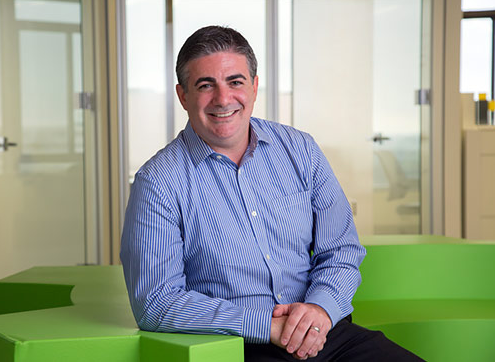February 4, 2019
 by Gerard Tonti / February 4, 2019
by Gerard Tonti / February 4, 2019

As we dive headfirst into the new year, you’re likely pulling together different 2019 plans to help your nonprofit grow, and one of the most important strategies to develop during this time is your fundraising plan.
From digital fundraising strategies to campaign marketing, your fundraising plan includes various elements that all work together to help boost your nonprofit’s efforts to build revenue.
However, too many nonprofits focus their fundraising plans on the acquisition of new donors. These nonprofits miss out on a major source of revenue that comes from directing your concentration on the retention of past donors.
When you build your fundraising strategy for 2019, make a conscious effort to strengthen donor relations with your past supporters. This will help you maintain a steady stream of revenue into the future, instead of relying on cold outreach to new donors.
As you construct your fundraising strategy, be sure to incorporate the following donor retention tips:
Your nonprofit is likely anxious to grow and expand your services to a wider audience. Even if you’re not looking to grow, you still need a comprehensive funding plan to finance your current efforts.
Let’s dive in to learn more about creating your nonprofit’s fundraising plan in five steps:
One of the first steps to improving your nonprofit’s donor relations is simply knowing more about each of your donors. Donor databases, or constituent relationship managers (known as CRM software), are built to help organizations capture and save important donor information to build relationships later on.
TIP: There are also CRM tools made specifically for nonprofits. Check out the best nonprofit CRM software tools in 2019.
Access to important information can help your nonprofit target messages for the best response rate. This information gives you the power to create specialized segments of donor lists in order to communicate with:
Various donor types. It can be helpful to classify donors based on the types of gifts they’ve contributed in the past. For instance, you may communicate differently with those who have given a major gift than those who signed up for a recurring smaller gift.
Those with specific demographic markers. You can make predictions about the responses you’ll receive from donors based on demographic factors – such as age, region, political party, and more. Use these predictions to write to each group in a manner designed to appeal to their demographic.
Donors with meaningful networking flags. If you’re looking to improve your organization’s professional network, you can always reach out to donors who have valuable connections. Save information about a donor’s employer, education experience and other nonprofits they support.
How do you access this information to begin with? There are various sources – from your donation page, to your lead capture forms, to conversations – through which you can learn important information about each of your donors.
You need to be able to transfer data from these sources into your database and manually add information that you may come across in person.
Technology is built to make life easier, so your nonprofit shouldn’t be constantly transferring data from one source to another in order to collect important information. When you are creating your fundraising plan, make sure you consider the ways in which you can streamline this transfer of data for a more efficient system.
One way to transfer data is by choosing a CRM that specializes in easing nonprofit fundraising efforts. Read more about this type of system with Salsa’s fundraising CRM guide. Remember that any engagement is good engagement with your donors. Whether your donors are reading your emails or giving another donation, these interactions help build relationships and result in future donations.
Once you have your nonprofit’s donor database set up to collect the important information about each one of your donors, it’s time to start reaching out to these donors through an automatic email campaign.
At this point, your nonprofit fundraising strategy will be heavily connected to your marketing strategy.
Your nonprofit marketing strategies likely include important outreach to your supporters regarding your upcoming events, campaigns, and other stewardship opportunities. The ultimate goal of this outreach is to land a donation. Therefore, intentionally drawing connections between your fundraising and marketing strategies will boost the productivity of both plans.
Triggering automatic emails is a marketing technique that is used for a couple of different important purposes:
Be sure you have access to a marketing automation tool that will ensure you have the ability to set up triggers for different actions. Start drafting response messages for different actions now as a part of your nonprofit’s fundraising planning process.
When you’re thinking about your donors, it’s important to not only consider how they are catering to your needs through gifts, but how you are catering to theirs through platform preference.
Relationships are a two-way street. Make sure you’re making things as easy as possible for your donors to encourage them to give to your organization.
Different people prefer to give through various platforms. For instance, 55 percent of Millennial donors prefer to give online, 19 percent of Baby Boomers still prefer giving through direct mail, and 12 percent of Gen X donors prefer bank transfers, according to this nonprofit fundraising statistics article by Double the Donation.
Therefore, in order to make the widest appeal to donors, you need to be sure you’re taking into consideration access to multiple fundraising platforms.
Some of the fundraising donation acceptance methods you may consider establishing for your organization include:
If you have these multiple methods of fundraising, you need to make sure you’re maintaining the quality of the giving process for each one. It’s not enough to make every one of them available. You also need to ease the process of giving for each.
If you don’t have the manpower or a software system to assist with this maintenance, then you may need to sacrifice one or two platforms. It’s better to have fewer platforms with an excellent donor experience than to have more platforms with a troublesome experience.
While this may not immediately connect to donor relationships in your mind, matched gifts are an important element of your fundraising strategy that can help convert more donors.
Matched gifts are offered by companies that want to encourage a culture of philanthropy at their businesses. These companies will offer to match the donations given by their employees to eligible nonprofits.
More than 18 million people work for companies that offer a matching gift program. Plus, 84 percent of donors say that they’re more likely to donate if their gift is matched according to recent matching gift statistics.
However, many of these matching gift eligible donors are unaware of such philanthropic programs at their companies. As you establish your fundraising plan, be sure your donors have an effective method to check their eligibility.
There are two primary methods to incorporate matching gift revenue into your fundraising plan:
Include a matching gift database on your donation page. With a database, your online donors can type in the name of their employer into a search bar. The database then generates the parameters to receive this type of gift if the company offers a program.
Invest in a fully automated matching gift tool. An automated system will scan the emails of donors as they give to your organization, searching for donors associated with companies that offer matching gift programs. Then you can set up emails to send to your eligible donors.
One of the advantages of investing in a fully automated system is that you’ll have all of the data you need to create a segment of donors in your CRM who are matching gift eligible. Then you can personalize marketing materials to these donors and encourage them to take advantage of this resource.
Two key factors for establishing effective relationships with donors are consistent outreach and effective planning. After all, that’s why you’re making a fundraising plan to begin with! Stay organized by writing all of your fundraising efforts down in your annual fundraising calendar.
Whether you keep a physical calendar on your office wall or a digital calendar on your computer to stay organized, you should make sure you have as much information recorded in this tool as possible.
This calendar should feature everything your nonprofit has for this year, including:
Keep to your schedule as effectively as you can. It’s more than likely that your nonprofit will see some fluctuation of soft deadlines or benchmark dates, and that’s ok! Make a note of when you get off track so that you can better schedule these activities next year.
Tip: Need a little help organizing donors after a fundraising event? Learn more here!
Your fundraising strategy may seem somewhat tricky to create. It’s not easy work!
If you have an especially difficult year planned – for instance, if you’re planning to launch a capital campaign – it may be beneficial to consider hiring a professional to help craft your plans.
Conduct research and look for nearby or remote fundraising consultants who can guide your nonprofit in establishing the best fundraising plan you’ve ever had.
If you choose to craft it on your own, these five tips should have you well on your way to effective fundraising in 2019!
Ready to start raising money for your nonprofit organization? Learn about the best free online fundraising software tools in 2019.
Gerard Tonti is the Senior Creative Developer at Salsa Labs, a fundraising software company for growth-focused nonprofits. Gerard's marketing focus on content creation, conversion optimization, and modern marketing technology helps him coach nonprofit development teams on digital fundraising best practices.
Your nonprofit may be backed by many generous supporters, but are you making the most of their...
 by Jay Love
by Jay Love
If your nonprofit is considering a peer-to-peer fundraising campaign, you’ve probably read all...
 by Leigh Kessler
by Leigh Kessler
Every now and then you probably think about how much technology has changed the landscape of...
 by Jay Love
by Jay Love
Your nonprofit may be backed by many generous supporters, but are you making the most of their...
 by Jay Love
by Jay Love
If your nonprofit is considering a peer-to-peer fundraising campaign, you’ve probably read all...
 by Leigh Kessler
by Leigh Kessler


